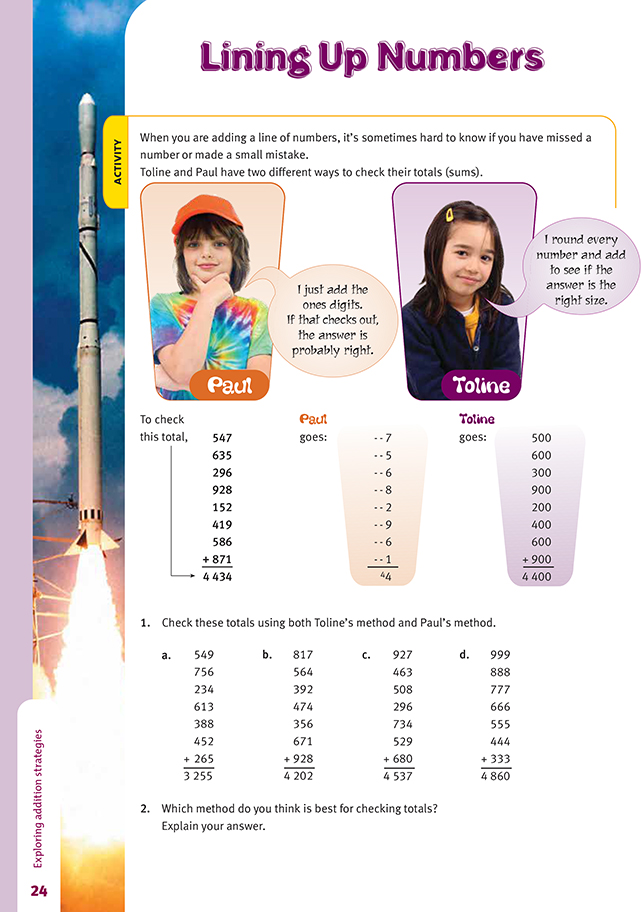This is a level 3 number link activity from the Figure It Out series. It relates to Stage 6 of the Number Framework.
A PDF of the student activity is included.
Click on the image to enlarge it. Click again to close. Download PDF (241 KB)
round to the nearest ten
use mental strategies to solve addition problems
FIO, Link, Number, Book Five, Lining up Numbers, page 24
This activity gives the students valuable practice in adding columns of figures as well as thinking about useful ways of checking their answers.
The students could discuss the following:
i. When adding up columns of digits, do they just add the numbers from the top to the bottom or do they look for numbers that they can easily add together? For example in the ones column in question 1a, would they pick out 6 + 4 and 8 + 2?
ii. What strategies do they use to keep track of the digits they are adding when working with a calculator?
If the students do add columns of digits by “making tens”, then you may wish to explore with them the mathematics principles that enable them to do so. Take the ones column in question 1a again: if this were written out horizontally (beginning from the top), it would be 9 + (6 + 4) + 3 + (8 + 2) + 5. The brackets show the making tens strategy. Seen this way, it is really the associative (or grouping) principle at work. The commutative principle is also being used because the mental addition is actually (6 + 4) + 9 … In other words, after associating or grouping 6 and 4, the order of the numbers has been changed. These associative and commutative principles (or properties or laws) work for addition and multiplication but not for subtraction and division. The students may be able to suggest other more difficult instances where they could make use of these principles.
Answers to Activity
1. a. Incorrect total. The correct total is 3 257. Paul’s method will find the error, but Toline’s will not.
b. Correct total, although Toline may think there is an error.
c. Incorrect total. The total is 4 137. Paul’s method will not find the error, but Toline’s will.
d. Incorrect total. The correct total is 4 662. Both methods will work, although Toline may miss the error.
2. Toline’s method can show a total to be false when it is actually true. This happens when the “roundups” do not balance the “round-downs”. With Paul’s method, the units column will usually be correct, but there could be errors in the other columns that Paul’s method will not pick up.
